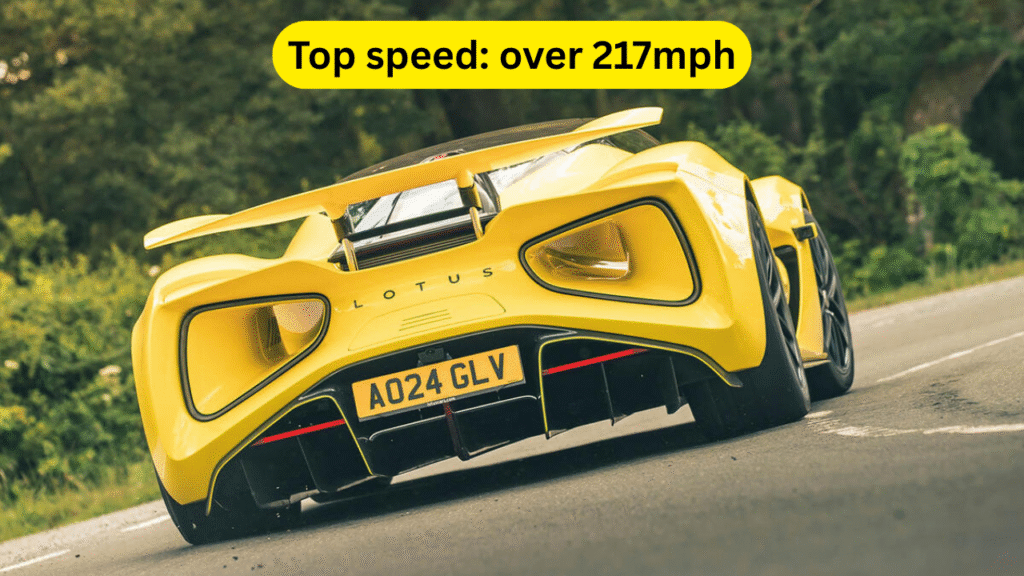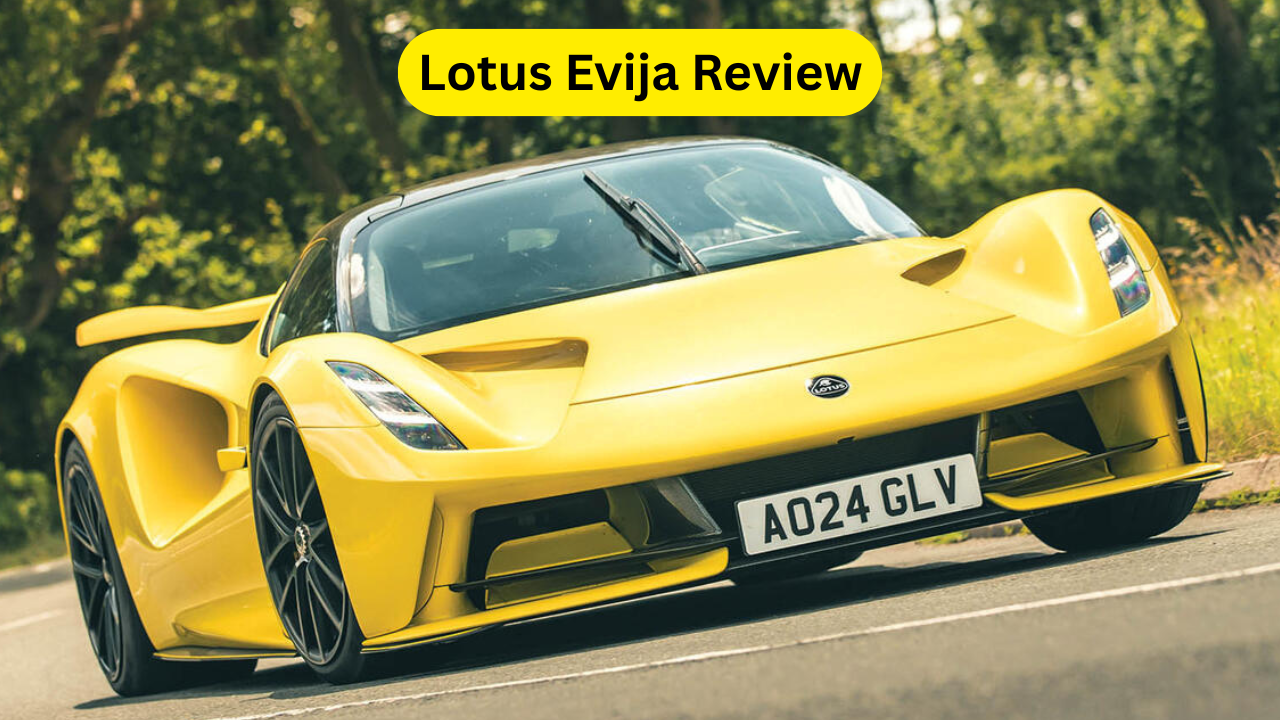Lotus Evija Review: As Lotus navigates through financial turbulence—marked by job cuts and looming factory closures—it couldn’t ask for a better distraction than the long-awaited Lotus Evija, the brand’s boldest, most extreme project yet. After years in development, the all-electric hypercar is finally here and has landed in the hands of Autocar for a full road and track test.
And let’s be clear: the numbers are as jaw-dropping as the car itself.
Powertrain & Performance: A Megawatt Marvel
The Evija produces a staggering 2,011bhp (yes, over 2,000 horsepower), delivered through four electric motors—one at each wheel. It’s officially the most powerful production car ever tested by Autocar, and that raw power translates into utterly mind-bending performance:
- 0–62mph in under 3 seconds
- 0–186mph (300km/h) in under 9 seconds
- Top speed: over 217mph
What’s most astonishing isn’t just the straight-line speed, but the ferocity and consistency of acceleration at any speed. Unlike combustion engines that lose thrust at higher revs, the Evija just keeps going—relentlessly.
Also read: Vauxhall Frontera Electric Now Offers 253-Mile Range Under £28,000 — Should You Buy One?
Handling & Dynamics: Lotus DNA Intact
On the track, the Evija proves Lotus hasn’t lost its dynamic edge. Despite its 1,700kg weight, the handling is razor-sharp, thanks to:
- Active torque vectoring
- Inboard suspension design
- A low centre of gravity from its T-shaped battery layout
The steering feel is pure Lotus—engaging, precise, and confidence-inspiring. There’s a fluid connection between car and driver, uncommon in the EV space. Track testing revealed remarkable lateral grip, phenomenal braking performance, and a chassis that encourages you to push further.

Interior & Usability: Minimalist Meets Motorsport
The Evija’s cabin is a mix of futuristic minimalism and race-car ergonomics:
- Carbon-fibre everything, exposed and purposeful
- F1-style steering wheel with rotary dials for drive modes
- Digital dash focused on performance telemetry
It’s not built for comfort, but it’s far from inaccessible. There’s more headroom and legroom than you’d expect from a hypercar, and visibility is surprisingly good. However, storage is minimal, and don’t expect a glovebox or frunk.
Range & Charging: Hypercar Realities
With a 69kWh battery, the Evija claims a WLTP range of around 250 miles—not bad for a car in this category. Charging is equally rapid:
- 800kW charging capability (future-proofed)
- Currently supports 350kW fast charging
- 0–80% charge in 18 minutes (under ideal conditions)
This is not your everyday EV, but it’s more usable than its specs might suggest.
Lotus Evija Price & Rarity
- Starting price: £2 million+
- Production limited to 130 units
Yes, it’s rare. Yes, it’s expensive. But this isn’t just a car—it’s a technological showcase, a symbol of what Lotus is capable of when unrestrained by budgets or mass-market concerns.
Verdict: A Proper Halo Car
The Lotus Evija is a staggering achievement—not just because of its numbers, but because it stays true to the brand’s core driving ethos, even as it embraces the electric future. It’s blisteringly fast, beautifully balanced, and totally uncompromising in its focus.

